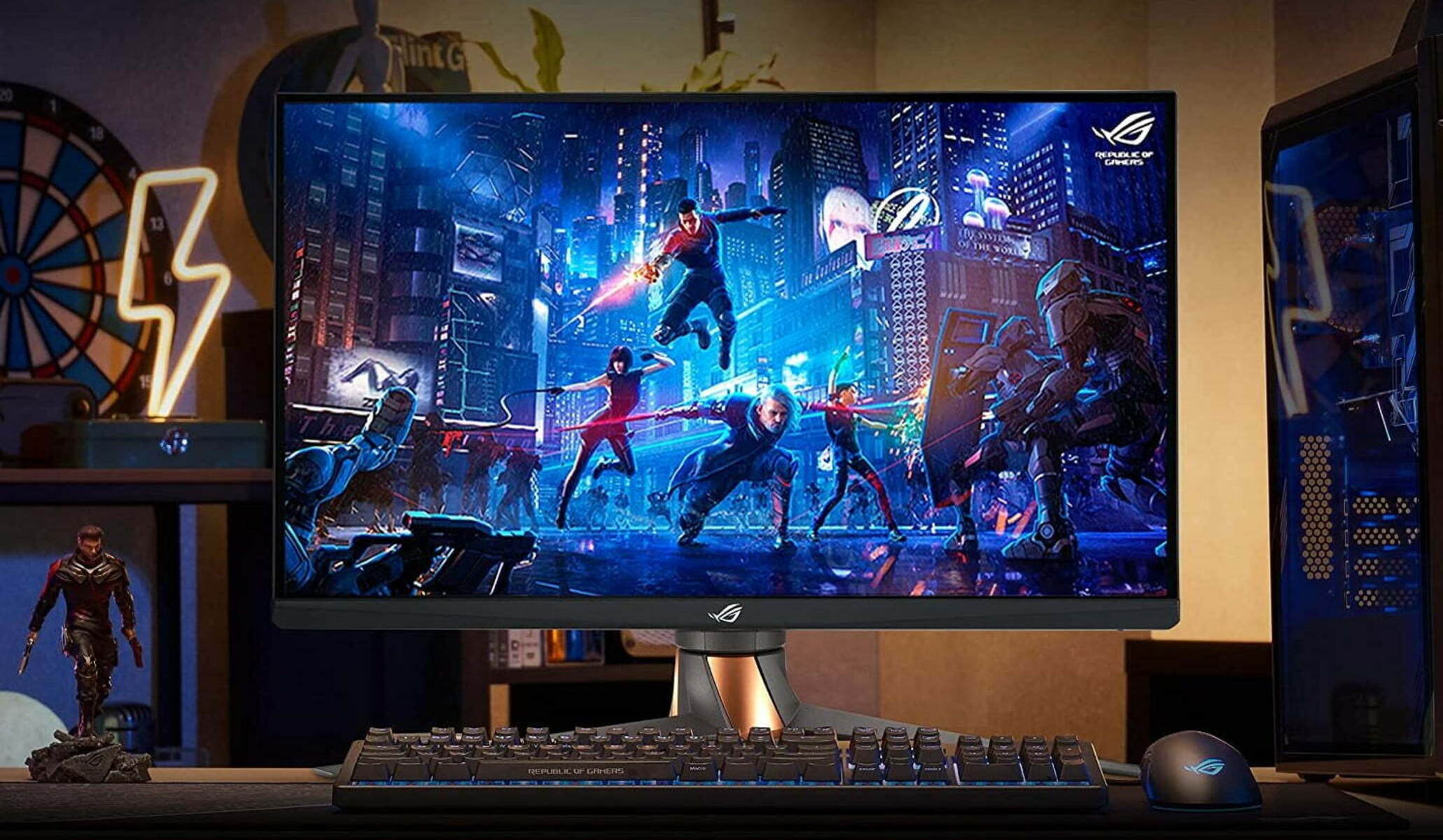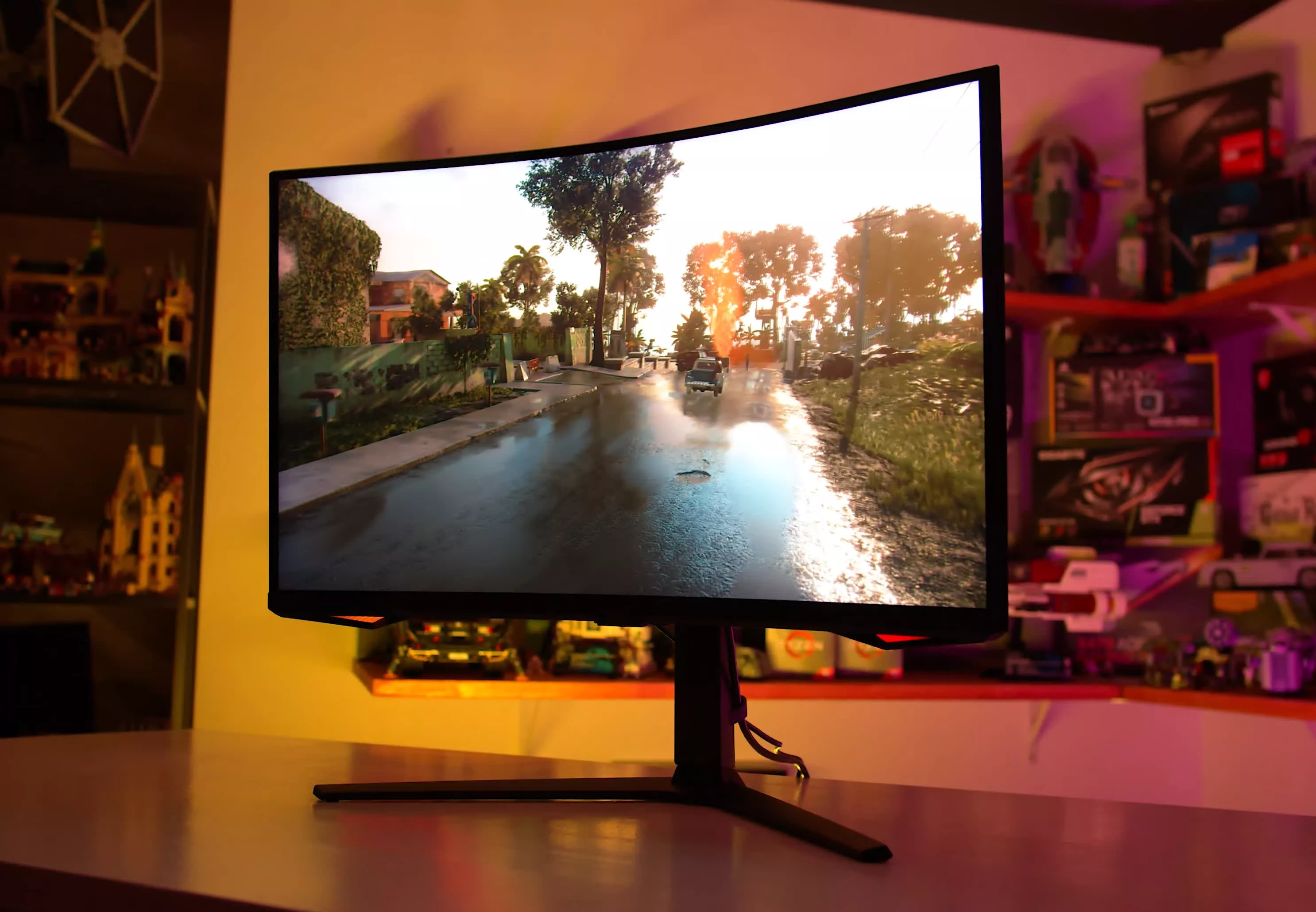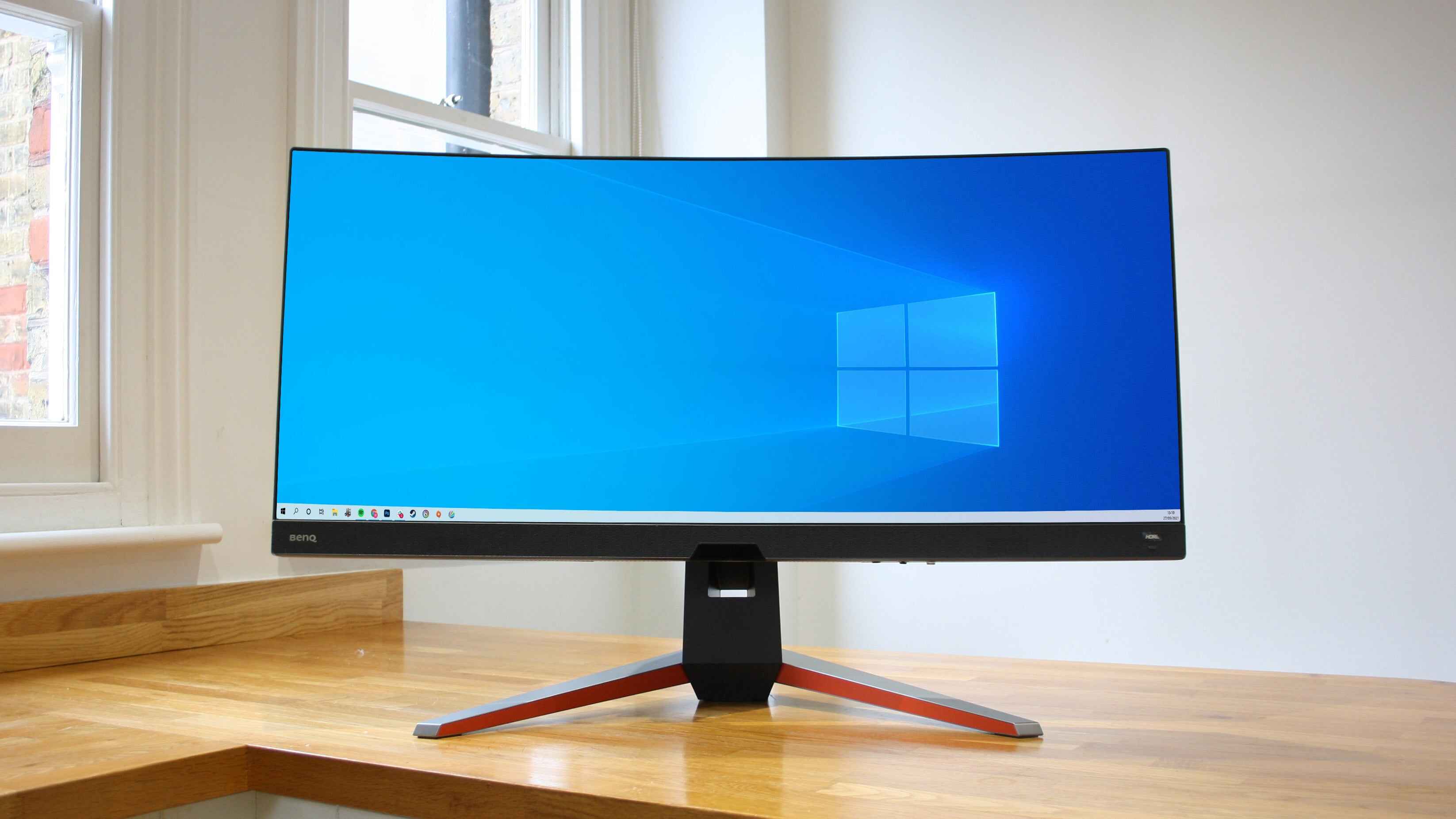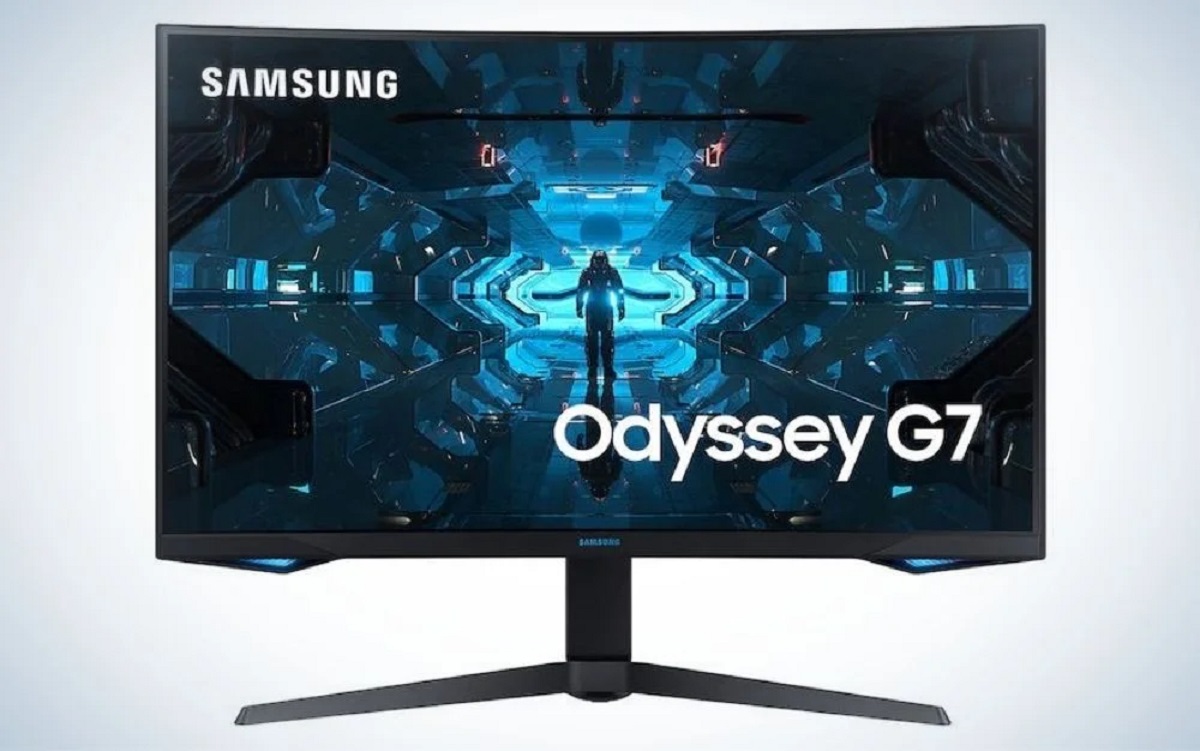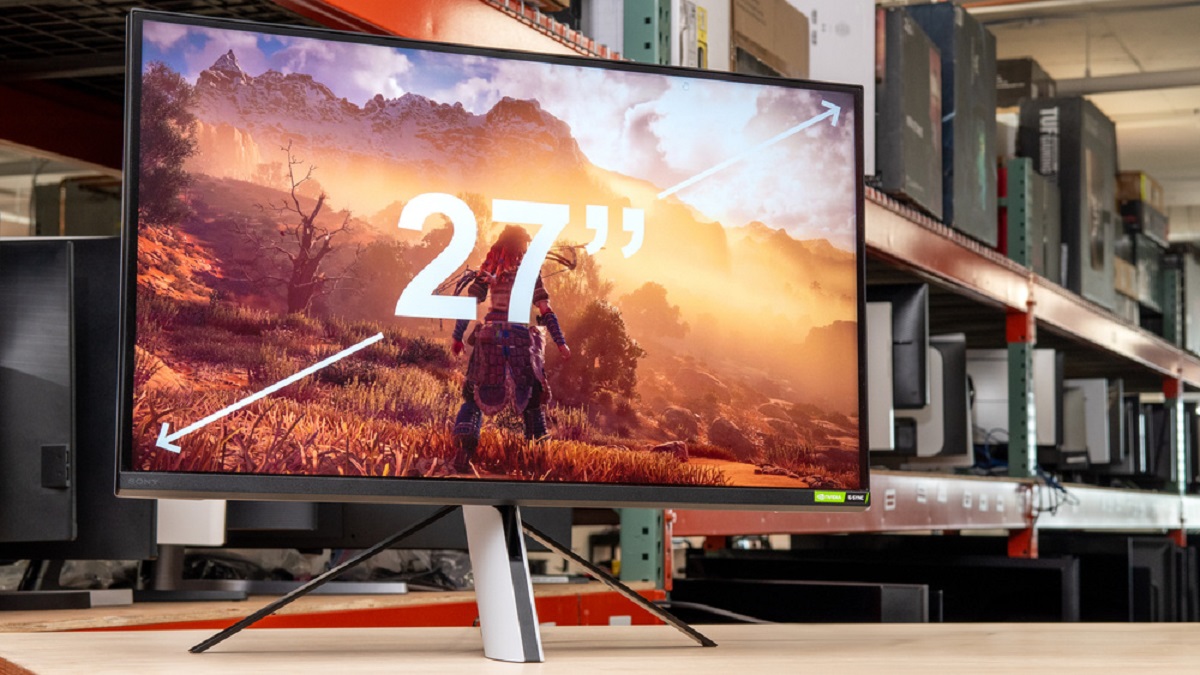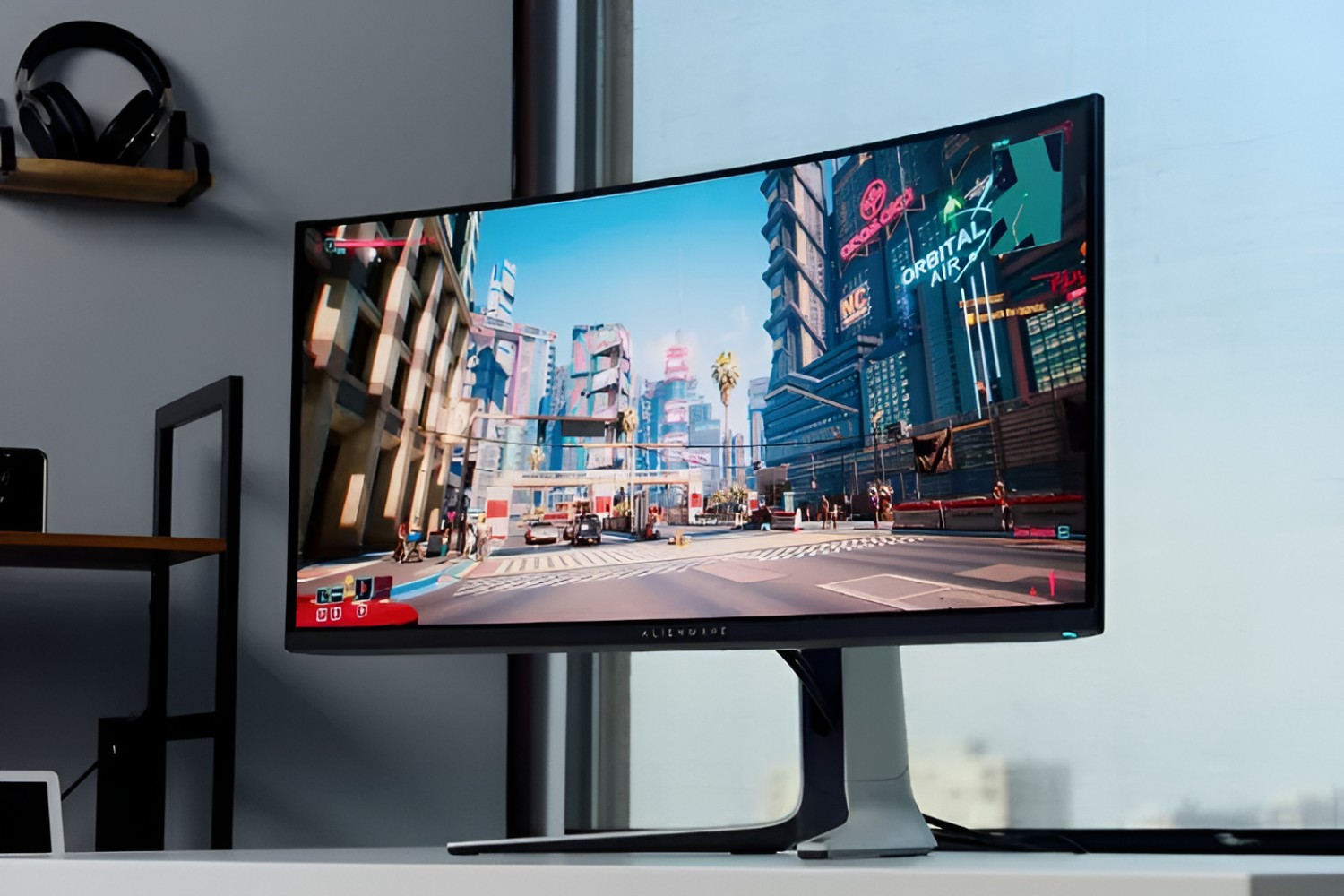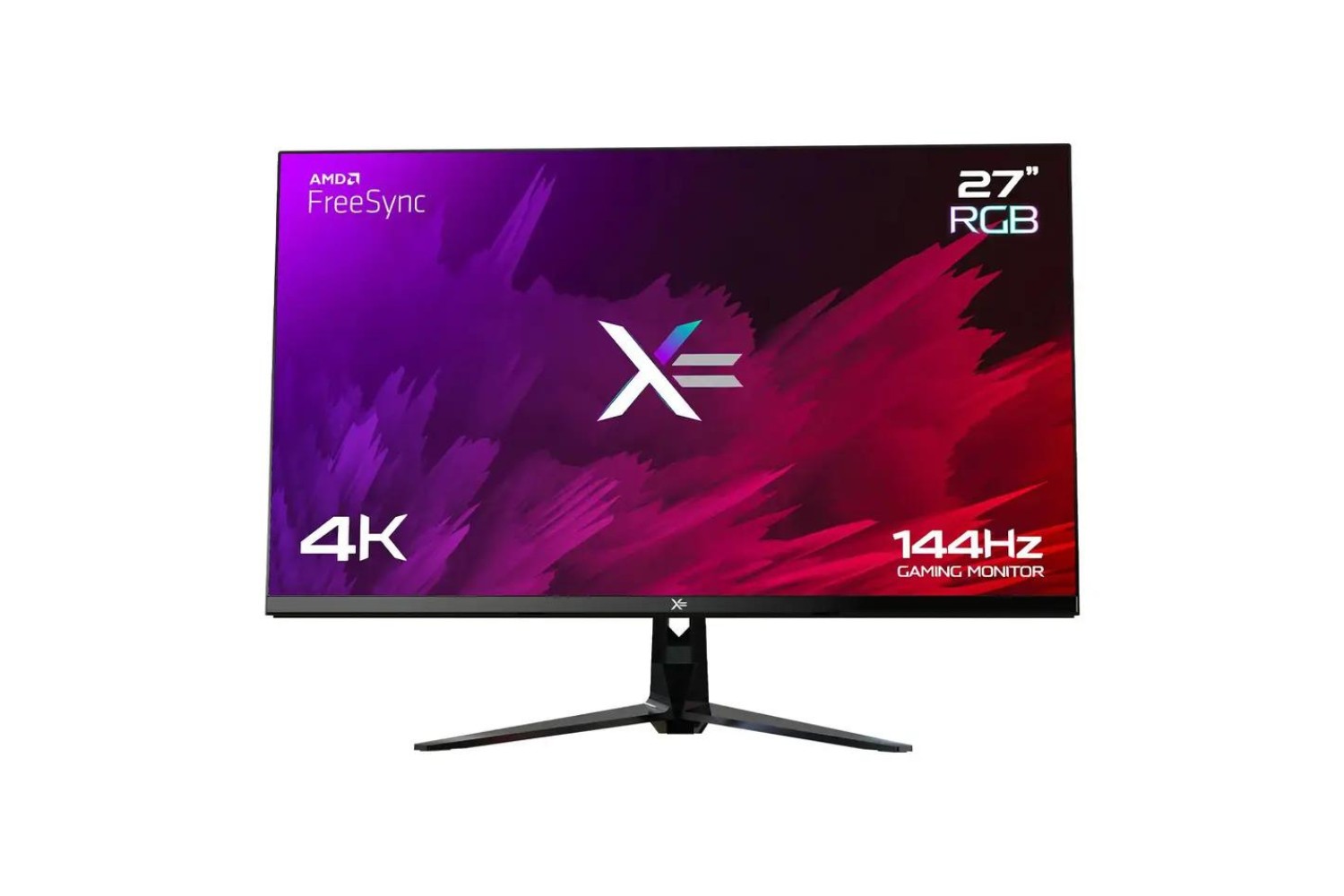Introduction
Gaming has become an incredibly popular form of entertainment in recent years, and enthusiasts are always on the lookout for ways to enhance their gaming experience. One important aspect of optimizing gameplay is choosing the right monitor. However, with so many options available on the market, it can be confusing to differentiate between different types of monitors and understand their features. Two commonly discussed monitor types are gaming monitors and 2K monitors.
In this article, we will explore the key differences between gaming monitors and 2K monitors, helping you understand their unique characteristics and make an informed decision when upgrading your display.
Before diving into the specifics, let’s briefly cover the basics of monitors. Monitors are display devices that allow you to view the content from your computer, and they come in different sizes, resolutions, and technologies. While the primary function of a monitor is to display visuals, different types of monitors are designed with specific purposes in mind, such as gaming or professional work.
Gaming monitors, as the name suggests, are specifically designed to enhance the gaming experience. These monitors usually prioritize features like high refresh rates, rapid response times, and adaptive sync technologies to minimize motion blur and input lag, providing a smooth and responsive gaming experience.
On the other hand, 2K monitors, also known as Quad HD or WQHD monitors, refer to displays that have a resolution of 2560 x 1440 pixels. They offer a higher pixel density compared to traditional Full HD monitors (1920 x 1080 pixels), resulting in sharper and more detailed visuals. While 2K monitors can certainly be used for gaming, they are not specifically optimized for gaming performance like gaming monitors are.
Now that we have a basic understanding of gaming monitors and 2K monitors, let’s dive deeper into the key differences between them. By understanding these differences, you will be able to choose the monitor that suits your specific needs and requirements.
Monitor Basics
Before discussing the differences between gaming monitors and 2K monitors, it’s important to have a clear understanding of the basic features and specifications that apply to all types of monitors.
One key aspect to consider is the monitor’s size. Monitors are typically measured diagonally from corner to corner and are available in various sizes, ranging from compact 21-inch displays to larger 27-inch or even ultrawide options. The size you choose will depend on your personal preference and the available space on your desk.
Another important consideration is the monitor’s resolution. Resolution refers to the number of pixels that make up the display. The higher the resolution, the sharper and more detailed the visuals will be. Full HD monitors have a resolution of 1920 x 1080 pixels, while 2K monitors have a resolution of 2560 x 1440 pixels, offering even more clarity and detail.
The display’s panel type is another factor to consider. The most common panel types are TN (twisted nematic), IPS (in-plane switching), and VA (vertical alignment). TN panels typically offer fast response times but have narrower viewing angles and less accurate color reproduction. IPS panels often provide better color accuracy and wider viewing angles but may have slightly higher response times. VA panels offer a balance between the two, with decent response times, good color reproduction, and better contrast ratios.
Additionally, the refresh rate and response time of a monitor play a crucial role in gaming. The refresh rate refers to how many times the display refreshes per second, usually measured in Hertz (Hz). A higher refresh rate, such as 144Hz or 240Hz, allows for smoother motion and reduces motion blur in fast-paced games. Response time, on the other hand, measures the time it takes for a pixel to transition from one color to another. Lower response times, like 1ms or 5ms, help minimize ghosting and improve overall motion clarity.
Connectivity options are also worth considering when choosing a monitor. Most modern monitors come with multiple ports like HDMI, DisplayPort, and sometimes even USB-C, allowing you to connect various devices and peripherals.
By understanding these fundamental aspects of monitors, you will be better equipped to make informed decisions when comparing gaming monitors and 2K monitors. It’s essential to consider these basic features alongside the specific characteristics of each monitor type to ensure the best overall experience for your needs.
Gaming Monitors
Gaming monitors are designed and optimized specifically for gaming enthusiasts. These monitors prioritize features that enhance the gaming experience, providing a competitive edge and a more immersive gameplay environment. Let’s explore some key characteristics of gaming monitors:
One significant feature of gaming monitors is their high refresh rates. While standard monitors typically have a refresh rate of 60Hz, gaming monitors often offer refresh rates of 144Hz, 240Hz, or even higher. A higher refresh rate means the display updates more frequently, resulting in smoother motion and less motion blur. This is particularly important in fast-paced games where quick reactions and precise movements are essential.
Another crucial aspect of gaming monitors is the response time. Response time refers to how quickly a pixel can change from one color to another. Gaming monitors often have low response times, usually between 1ms and 5ms, which helps minimize ghosting and motion blur. This ensures the screen accurately displays fast-moving objects, allowing gamers to react swiftly and accurately to in-game events.
Moreover, gaming monitors often feature adaptive sync technologies such as NVIDIA G-Sync or AMD FreeSync. These technologies synchronize the monitor’s refresh rate with the graphics card’s output, reducing screen tearing and stuttering. This results in a smoother gameplay experience, eliminating distractions caused by irregular frame rates.
Resolution is another factor to consider when choosing a gaming monitor. While gaming monitors come in various resolutions, many gamers opt for either Full HD (1920 x 1080 pixels) or Quad HD (2560 x 1440 pixels) displays. These resolutions strike a balance between visual clarity and performance, allowing for smooth gameplay without overburdening the graphics card.
Another aspect that gaming monitors often prioritize is the panel type. TN panels are commonly found on gaming monitors due to their fast response times, which are crucial for competitive gaming. However, some gaming monitors also offer IPS or VA panels, which provide better color accuracy and wider viewing angles, making them suitable for gamers who prioritize visual quality as well.
In terms of connectivity options, gaming monitors typically come equipped with multiple ports like HDMI, DisplayPort, and sometimes USB hubs. This allows gamers to connect gaming consoles, PCs, and other peripherals without the need for additional adapters or switches.
Gaming monitors are an excellent choice for avid gamers who value smooth gameplay, quick response times, and optimal visual clarity. These monitors provide a competitive advantage by reducing input lag and motion blur, making them an essential component for serious gamers.
2K Monitors
2K monitors, also known as Quad HD or WQHD monitors, offer a higher resolution compared to standard Full HD displays. With a resolution of 2560 x 1440 pixels, 2K monitors provide sharper and more detailed visuals, making them a popular choice for gamers, content creators, and professionals who demand high-quality images. Let’s delve into some key characteristics of 2K monitors:
The primary advantage of 2K monitors is their higher pixel density. With more pixels packed within the display, 2K monitors deliver crisper and more detailed images compared to lower-resolution monitors. This increased level of detail is especially beneficial for tasks that require precise image rendering and visual clarity, such as video editing, graphic design, and photo manipulation.
In terms of gaming, 2K monitors offer a noticeable improvement over standard Full HD displays. The higher resolution enhances the overall gaming experience by allowing gamers to see finer details in the game world, such as textures, shadows, and small objects. This additional level of detail adds depth and realism to the visual elements, creating a more immersive gaming environment.
Furthermore, 2K monitors provide a good balance between visual quality and performance. While 4K monitors offer an even higher resolution, they require more powerful hardware to run games smoothly at native resolution. 2K monitors, on the other hand, provide a visually appealing experience without putting too much strain on the graphics card. This makes them a practical choice for gamers who don’t want to sacrifice performance for resolution.
Like other monitor types, 2K monitors also come with different panel options, including TN, IPS, and VA panels. IPS panels are particularly popular for 2K monitors due to their excellent color accuracy, wider viewing angles, and overall superior visual quality. However, TN panels may still be preferred by some gamers who prioritize faster response times for competitive gaming.
Connectivity options on 2K monitors are typically similar to other monitors, offering ports like HDMI, DisplayPort, and sometimes USB hubs. This ensures compatibility with a wide range of devices, including gaming consoles, PCs, and multimedia devices.
In summary, 2K monitors are an ideal choice for individuals who demand higher visual quality and detail in their work or gaming experience. With their increased resolution, they offer sharper images and enhanced visuals, providing a more immersive and engaging viewing environment for gamers and professionals alike.
Key Differences Between Gaming Monitors and 2K Monitors
While gaming monitors and 2K monitors share some similarities, there are distinct differences that set them apart. Understanding these differences will help you determine which type of monitor best suits your specific needs and preferences. Let’s explore the key disparities:
The primary difference between gaming monitors and 2K monitors lies in their primary focus. Gaming monitors are specifically designed to optimize the gaming experience, prioritizing features like high refresh rates, low response times, and adaptive sync technologies. On the other hand, 2K monitors focus on providing higher resolution and visual clarity, catering to a wider range of tasks including gaming, content creation, and professional work.
Refreshing rate and response time are two crucial factors that set these monitor types apart. Gaming monitors excel in these areas, offering high refresh rates, often reaching 144Hz or even 240Hz, delivering smoother motion and reducing motion blur. Additionally, gaming monitors boast low response times, typically around 1ms or 5ms, ensuring minimal ghosting and maximizing in-game clarity. In contrast, 2K monitors usually have standard refresh rates of 60Hz, catering to tasks beyond gaming that do not require ultra-fast rendering or motion.
Resolution is another distinctive factor between gaming monitors and 2K monitors. Gaming monitors generally offer a range of resolutions, including Full HD (1920 x 1080 pixels), Quad HD (2560 x 1440 pixels), or even 4K (3840 x 2160 pixels). In contrast, 2K monitors specifically refer to displays with a resolution of 2560 x 1440 pixels. These higher resolutions on 2K monitors result in sharper and more detailed visuals, enhancing the overall viewing experience.
Panel type is another differentiating factor. Gaming monitors often feature TN panels, which offer fast response times but narrower viewing angles and less accurate color reproduction compared to other panel types. On the other hand, 2K monitors may utilize IPS or VA panels, which prioritize color accuracy, wider viewing angles, and overall superior visual quality.
Adaptive sync technology is commonly found in gaming monitors to eliminate screen tearing and stuttering, enhancing the smoothness of gameplay. Popular adaptive sync technologies include NVIDIA G-Sync and AMD FreeSync. While some 2K monitors may also feature adaptive sync, it is not as prevalent as in gaming monitors.
Ultimately, the choice between a gaming monitor and a 2K monitor depends on your specific needs and priorities. If gaming is your primary focus and you value features like high refresh rates and low response times, a gaming monitor would be the better option. However, if you require higher resolution and visual clarity for tasks beyond gaming, such as content creation or professional work, a 2K monitor would be more suitable.
Consider your specific requirements, the types of tasks you will be performing, and your budget when making a decision. Carefully weighing the differences between gaming monitors and 2K monitors will help you choose the ideal monitor that enhances your overall viewing experience and meets your specific needs.
Refresh Rate and Response Time
When it comes to gaming monitors and 2K monitors, two crucial factors to consider are refresh rate and response time. These specifications greatly impact the visual clarity and smoothness of the display during gaming or other multimedia activities. Let’s delve into the details of each:
The refresh rate refers to how many times per second a monitor updates the displayed image. It is measured in Hertz (Hz). A higher refresh rate means that the monitor can display more frames per second, resulting in smoother motion and reduced motion blur. Gaming monitors are known for their high refresh rates, which often reach 144Hz, 240Hz, or even higher. These higher refresh rates offer a substantial advantage, particularly in fast-paced games, as they provide a smoother and more fluid gaming experience. On the other hand, 2K monitors adhere to standard refresh rates, typically 60Hz, which are sufficient for most non-gaming tasks but may lack the smoothness desired for high-action gaming scenarios.
Response time measures how quickly a monitor’s pixels can change color from one shade to another. It is typically measured in milliseconds (ms). A lower response time ensures that the pixels can transition rapidly, minimizing ghosting and motion blur. Gaming monitors shine in this aspect, offering response times as low as 1ms or 5ms. The quick response time helps display fast-moving objects with greater clarity, resulting in a crisp and fluid gaming experience. In contrast, 2K monitors generally have response times ranging from 4ms to 8ms, which is still suitable for most tasks but may not offer the same level of motion clarity as gaming monitors.
It’s worth noting that while a high refresh rate and low response time contribute to a smoother viewing experience, they are not the only factors that determine overall visual quality. Factors such as panel type, resolution, and color accuracy also play significant roles.
For gamers who prioritize fast-paced action and competitive gameplay, a gaming monitor’s high refresh rate and low response time are essential. The ability to see crisp and fluid motion without blurring or ghosting aids in quick reactions and precise gameplay. On the other hand, 2K monitors, although they may not match gaming monitors in terms of refresh rate and response time, still offer visually impressive detail and clarity, making them suitable for non-gaming tasks that require high-resolution visuals, such as photo editing or video production.
Ultimately, the decision between a gaming monitor and a 2K monitor depends on your specific needs and preferences. If gaming is your primary focus, and you value smooth and responsive gameplay, a gaming monitor with a high refresh rate and low response time is the better choice. However, if you require a monitor that offers a higher resolution and visual clarity for general tasks beyond gaming, a 2K monitor will meet your needs without sacrificing too much in terms of motion clarity.
Resolution
Resolution is a critical specification to consider when choosing between a gaming monitor and a 2K monitor. It determines the number of pixels that make up the display, consequently affecting the level of detail and visual clarity. Let’s explore how resolution differs between these two monitor types:
Gaming monitors offer a range of resolutions, including Full HD (1920 x 1080 pixels), Quad HD (2560 x 1440 pixels), and even 4K (3840 x 2160 pixels). These resolutions impact the overall level of detail and sharpness in the displayed images. Full HD resolutions are widely popular among gamers due to their ability to deliver smooth performance even on mid-range graphics cards. However, for gamers who desire more detail and visual fidelity, Quad HD and 4K resolutions are ideal choices, as they offer a higher pixel count and therefore a crisper image.
On the other hand, 2K monitors specifically refer to displays with a resolution of 2560 x 1440 pixels. These monitors provide a significant increase in detail compared to Full HD displays. With 2K resolution, the images appear sharper and more defined, offering a better viewing experience for a variety of tasks beyond gaming.
It’s important to note that higher resolutions require more powerful hardware to drive them effectively. For gaming, a higher resolution demands a more capable graphics card. While gaming monitors are often designed to accommodate these higher resolutions, they also prioritize features like high refresh rates and low response times to ensure smooth gameplay. Thus, it is crucial to consider your hardware capabilities when weighing the benefits of higher resolutions in gaming monitors.
While gaming monitors excel in providing higher resolutions, 2K monitors are specifically designed to offer a sharper and more detailed visual experience. The increased pixel count of 2K monitors enhances the level of detail in images, making them well-suited for tasks that require precise image rendering, such as photo editing, graphic design, and video production.
When making a decision between a gaming monitor and a 2K monitor, consider your primary use case and your hardware’s capabilities. If gaming is your primary focus and you have a powerful graphics card, a gaming monitor with a higher resolution may offer a more immersive gaming experience. However, if you require a monitor that provides superior detail and visual clarity for a wide range of tasks beyond gaming, a 2K monitor is a solid choice.
In summary, resolution plays a crucial role in determining the level of detail and visual fidelity of a monitor. Gaming monitors offer a range of resolutions, including Full HD, Quad HD, and 4K, catering to gamers’ varying needs, while 2K monitors specifically provide a resolution of 2560 x 1440 pixels, delivering a sharper and more detailed viewing experience for various tasks.
Panel Type
When comparing gaming monitors and 2K monitors, one important aspect to consider is the panel type. The panel type of a monitor affects various aspects of the viewing experience, including color accuracy, contrast levels, and viewing angles. Let’s explore the different panel types and their implications for these monitor types:
The most common panel types found in monitors are Twisted Nematic (TN), In-Plane Switching (IPS), and Vertical Alignment (VA).
TN panels are frequently used in gaming monitors due to their fast response times, making them ideal for reducing motion blur in fast-paced games. They generally excel in providing high refresh rates and low response times, which are essential for competitive gaming. However, TN panels typically have narrower viewing angles and less accurate color representation compared to other panel types. This means that colors may appear slightly washed out or distorted when viewing the screen from non-optimal angles.
IPS panels, on the other hand, prioritize color accuracy and wider viewing angles. They offer superior color reproduction, accurate color representation, and excellent viewing angles, often as wide as 178 degrees. These qualities make IPS panels well-suited for tasks that require precise color matching and a wider viewing range. While IPS panels can provide a visually stunning experience, they generally have slightly slower response times compared to TN panels. However, advancements in technology have reduced this gap, and IPS panels on gaming monitors now offer more competitive response times.
VA panels strike a balance between TN and IPS panels. They typically offer better contrast ratios and superior color reproduction compared to TN panels, resulting in deeper blacks and more vibrant visuals. VA panels also have wider viewing angles than TN panels but may not match the wide viewing angles and color accuracy of IPS panels. In terms of response times, VA panels can vary, with some models providing fast response times suitable for gaming, while others may display slightly slower response times.
Gaming monitors often feature TN panels due to their emphasis on fast response times, allowing for optimal gameplay performance. The fast response times minimize motion blur, delivering smooth visuals during intense gaming sessions. However, some gaming monitors now offer IPS panels for improved color accuracy and wider viewing angles, catering to gamers who also prioritize visual quality.
On the other hand, 2K monitors generally utilize IPS or VA panels, focusing on delivering accurate color reproduction and wider viewing angles. These panel types are well-suited for content creation, graphic design, and tasks that require precise color representation and wider perspective.
Ultimately, the choice between panel types depends on your priorities and use cases. If gaming is your primary focus, a gaming monitor with a TN or IPS panel would be an excellent choice, with TN panels offering faster response times and IPS panels providing superior color accuracy. If you need a monitor for tasks beyond gaming that require accurate colors and wider viewing angles, a 2K monitor with an IPS or VA panel would be more suitable.
Consider your specific requirements, such as gaming preferences or professional needs, when deciding between different panel types. Understanding the strengths and limitations of each panel type will help you choose the monitor that best meets your individual preferences and priorities.
Adaptive Sync Technology
Adaptive sync technology is an important consideration when comparing gaming monitors and 2K monitors. It plays a key role in reducing screen tearing and stuttering, ultimately enhancing the overall visual experience. Let’s explore this technology and how it differs between these two monitor types:
Adaptive sync technology aims to synchronize the refresh rate of the monitor with the output of the graphics card, resulting in smoother and tear-free visuals. Two commonly used adaptive sync technologies are NVIDIA G-Sync and AMD FreeSync.
Gaming monitors often feature either NVIDIA G-Sync or AMD FreeSync, depending on the graphics card compatibility. NVIDIA G-Sync is designed for monitors that are compatible with NVIDIA graphics cards, while AMD FreeSync is compatible with AMD graphics cards. These technologies work by adjusting the monitor’s refresh rate dynamically to match the varying frame rates produced by the graphics card. This synchronization minimizes screen tearing, a visual artifact where the image seems to tear apart horizontally.
By reducing screen tearing and stuttering, adaptive sync technologies provide a more visually pleasing and immersive gaming experience. In fast-paced games with varying frame rates, adaptive sync ensures that the monitor’s refresh rate adapts to the changing frame rates, resulting in smooth and fluid gameplay without interruptions caused by screen tearing or stuttering.
However, it’s important to note that while gaming monitors typically prioritize adaptive sync technologies, not all gaming monitors support both NVIDIA G-Sync and AMD FreeSync. Some monitors are exclusively compatible with one or the other. Thus, it’s essential to verify the compatibility of the monitor with your specific graphics card to ensure optimal performance.
Although adaptive sync technologies are more prevalent in gaming monitors, some 2K monitors may also feature adaptive sync, providing a smoother overall visual experience for gaming and multimedia tasks. However, due to their primary focus on resolution and visual clarity, 2K monitors may not prioritize adaptive sync as extensively as gaming monitors do.
For gamers who prioritize smooth and tear-free visuals, a gaming monitor with NVIDIA G-Sync or AMD FreeSync support is recommended. These adaptive sync technologies enhance the overall gaming experience by eliminating screen tearing and stuttering, delivering a more immersive and enjoyable gameplay environment.
For users who require a higher resolution and superior visual clarity for tasks beyond gaming, a 2K monitor may offer adaptive sync capabilities as well. While not as extensively tailored to gaming, the inclusion of adaptive sync in 2K monitors ensures a smoother visual experience during fast-paced multimedia tasks.
Ultimately, the decision between a gaming monitor and a 2K monitor regarding adaptive sync technology depends on your priorities and intended use. Consider your preferences, the compatibility with your graphics card, and the importance of tear-free visuals in your overall user experience.
Conclusion
When it comes to choosing between a gaming monitor and a 2K monitor, various factors come into play. Both types of monitors have their own unique features and specifications that cater to different needs and preferences.
Gaming monitors are designed specifically for gamers, prioritizing features like high refresh rates, low response times, and adaptive sync technologies. These monitors excel in delivering smooth and immersive gaming experiences, reducing motion blur and providing a competitive edge for gamers who require optimal performance. They often come in a range of resolutions, including Full HD, Quad HD, and even 4K, catering to gamers’ varying preferences and hardware capabilities.
On the other hand, 2K monitors offer higher resolution and visual clarity compared to standard Full HD displays. These monitors are suitable not only for gaming but also for tasks that require precise image rendering and enhanced visuals, such as content creation, graphic design, and professional work. With their increased pixel density, 2K monitors deliver sharper and more detailed images, providing an immersive viewing experience.
When making a decision, it is essential to consider factors such as refresh rate, response time, resolution, panel type, and adaptive sync technology, based on your specific needs and use cases. Assessing these features will help you determine which monitor best suits your preferences, whether it’s for intense gaming, professional work, or multimedia tasks.
Ultimately, the choice depends on the trade-offs you are willing to make. If gaming performance and competitive advantage are your top priorities, a gaming monitor with high refresh rates, low response times, and adaptive sync technologies is the way to go. If you require a monitor that offers superior resolution, visual clarity, and color accuracy for a variety of tasks beyond gaming, a 2K monitor will be a better fit.
Consider your budget, hardware capabilities, and the specific tasks you will be engaging in before making your decision. Take into account your individual preferences, as well as the balance between performance and visual quality that aligns with your requirements.
Ultimately, selecting the right monitor is a personal choice that should meet your specific needs and enhance your overall computing experience, whether it’s gaming, content creation, or professional work.







